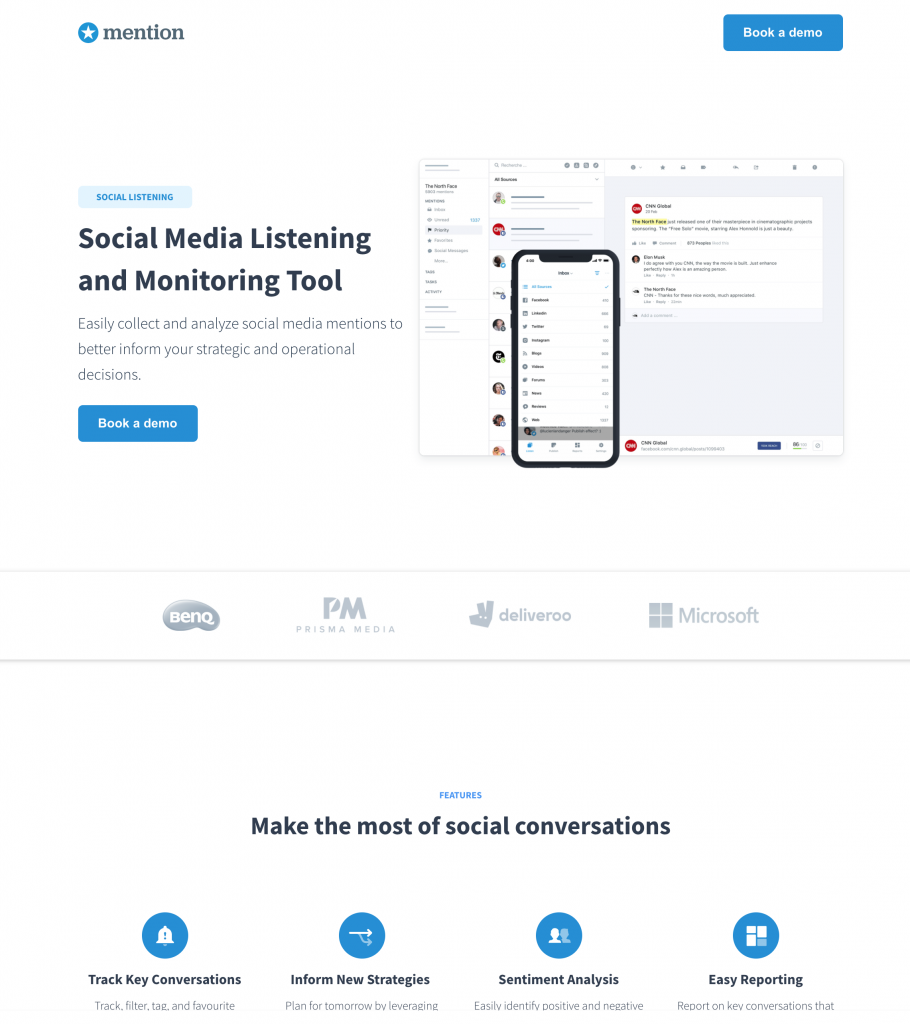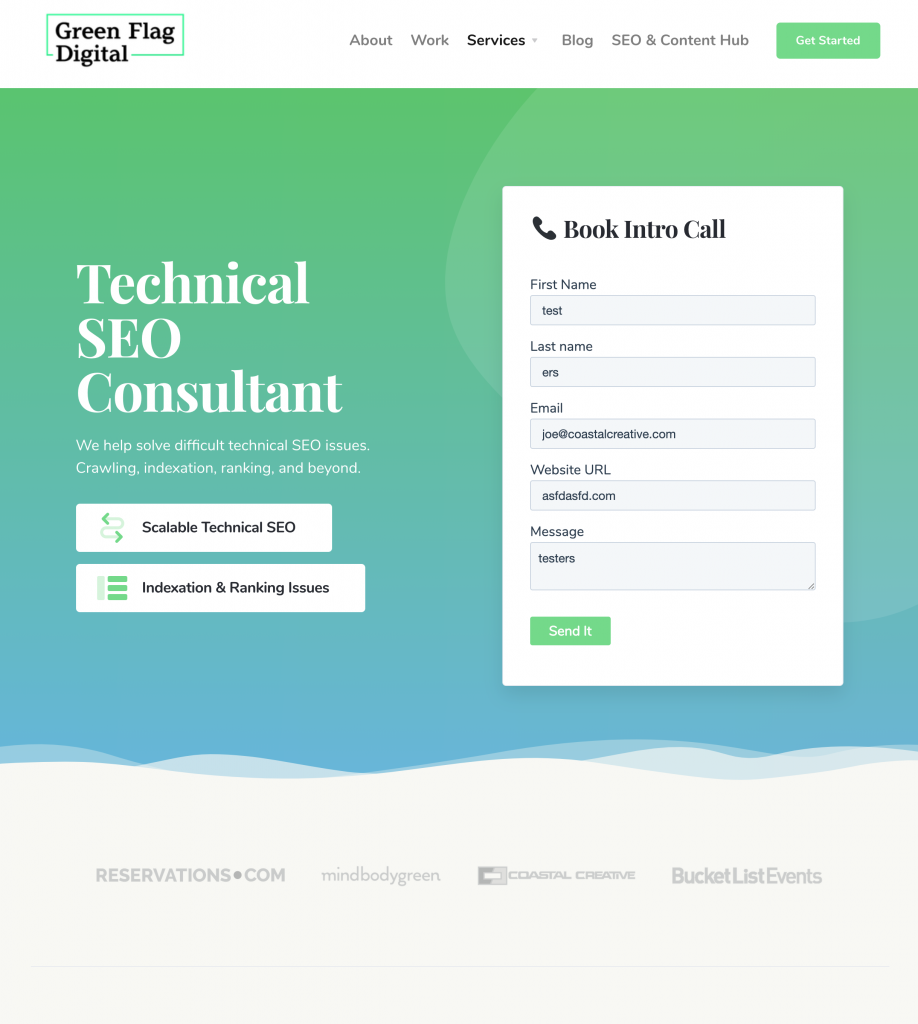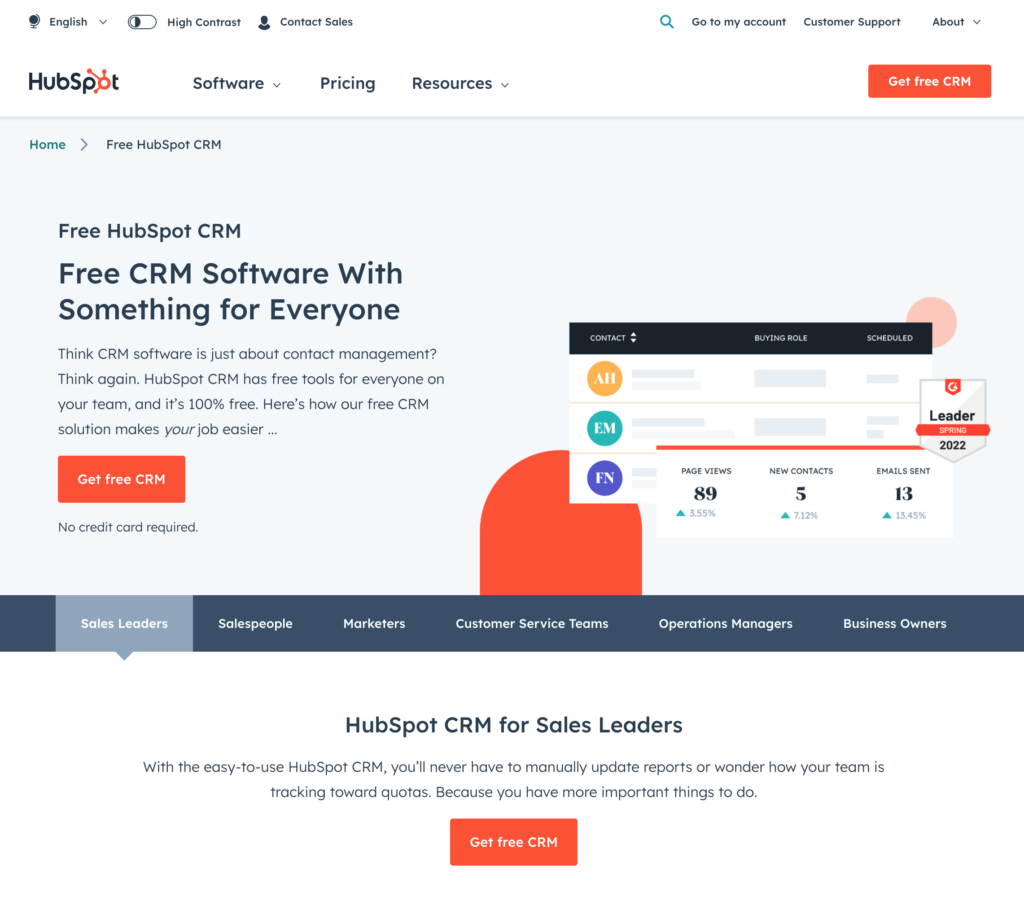Have you ever Googled “HubSpot vs Salesforce” and landed on HubSpot’s page for it?
That’s an SEO landing page, created by HubSpot, so they could earn traffic for that keyword and show off the product features.
In this new age of LLMs and AI Search in 2026, we really need to focus on creating commercially-oriented landing pages. Because informational search is getting totally competed away by Google’s AI Overviews and ChatGPT.
Time to get commercial – and be smart and competitive with SEO landing pages. This strategy works on both Google Search and LLMs.
Too often, a firm’s approach to creating simple service pages is usually rudimentary and based on vibes. Totally fine. However, if a company seeks organic traffic – which we know is highly valuable and sticky if done well – this is a massive gold mine to figure out.
SEO landing pages are literally money pages. Money-generating pages that are halfway between your main product landing pages and longform blog posts.
My hot take is that not enough companies even think about SEO landing pages, and they don’t even have them on the radar. Paid search landing pages get all the attention.
What are Landing Pages?
Landing pages are pages on a website that are built for a singular, focused purpose with the goal of converting the visitor to the next step. Traffic is sent to landing pages via a variety of different marketing channels. Email and lead generation are core components of landing pages. There are many different types of landing pages, such as product landing pages, service landing pages, video sales letters, squeeze pages, launch pages, etc.
Breaking it down, step by step, landing pages are:
- Typically lower-funnel pages where the goal is to get people to take action and convert
- Focused on a specific headline and goal
- Represents a slice or an expression of an overall product or service
- Can be geared towards all traffic sources, or specific ones like paid search, social, email, SEO, etc.
What are SEO Landing Pages?
SEO landing pages are pages built to rank in search, both traditional and AI and LLMs (Google, Bing, ChatGPT, etc). The ultimate goal is to drive branding, impressions, traffic, conversions, and revenue.
Characteristics of SEO landing pages that are different from paid landing pages:
- Typically longer in length with more content
- Ideally, follow a framework like PAS (pain, agitation, solution) or AIDA (awareness, interest, desire, action)
- Targeting keywords and topics related to that theme, and tries not to go too broad
- The creator will monitor these with rank tracking tools and analytics
- Typically, a large batch of SEO landing pages is created to follow the power law framework
For the purpose of this post, we are separating landing pages from these pages:
- Product pages
- Category pages
- Info pages with no conversion intent
- Home pages, about us pages, etc
- Blog posts and educational content
- Legal pages
So while product pages, category pages, and blog posts most certainly can and are landing pages that people do convert on, for this post we’re focusing on what most people mean when they talk about landing pages: a focused page that has a goal of having you fill out the form to convert.
It’s all about conversion.
What’s the Difference Between SEO and PPC Landing Pages?
Typically, on a paid search landing page, you’ll have a small amount of content and focus purely on conversions.
In addition, with paid search landing pages, you will noindex the page so it doesn’t show up in search results.
Paid search landing pages also have a minimal header navigation and few “leaks” where people may click out to another page before converting.
Here’s a good example from Mention:

Conversely, with SEO landing pages, you want to target distinct products or services that are different enough from other offerings that they deserve their own page.
You may also choose to do this if you want to target distinct variations of similar keywords that have a different intent.
For example, our technical SEO landing page directly targets technical SEO consulting. While this is a standard service page, it’s also a landing page because it is conversion-oriented:

SEO landing pages should do the following:
- Be clear on conversion goals and revenue monetization level
- Be clear on funnel level – is it a mid-funnel landing page or a lower-funnel landing page?
- Specifically target a topic or keyword with healthy volume or customer demand to warrant creation and maintenance.
- Write about 1,000 – 2,000 words on the landing page.
- Cover multiple subtopics on the page, write like a human, and think deeply about what your buyer persona wants to see.
- Write out the 5-10 most common FAQs and put those at the bottom of the page.
- Include images and video to demonstrate your knowledge, intelligence, and personality.
- Cover SEO basics – include keywords in a compelling title tag, page headline, and meta description.
- Link internally from other pages on your site to this new SEO landing page, ideally 5 links to start, more later if you can.
- Earn external links to this page. Much harder to do, but when writing a guest post, link back to this page if it makes sense contextually.
- Don’t worry too much about the other nitty-gritty things like image SEO and other small factors. You can come back to that about 30 days after launching to further optimize, but don’t let it delay things now.
- Monitor the page’s results over the 30-90 days after launch and add new keywords and topics that pop up in Google Search Console. You can also monitor user screen recordings using Hotjar or FullStory.
Hybrid SEO and PPC Landing Pages
There are also some who do hybrid landing pages, which are used for both paid traffic and SEO. If you’re tight on time and resources, these can be a good place to start. The downside is that if you’re optimizing for paid search conversions, you’ll be sub-optimizing for SEO, and vice versa.
Here’s a good example from Socialbakers:

Socialbakers may be accidentally allowing this page to show in search results since the title tag isn’t optimized for SEO, and the page isn’t long in content. But it’s bringing in some organic traffic, and they’re also sending AdWords traffic to the page.
Example SEO Landing Pages
HubSpot – Free CRM Landing Page

“Free CRM” is a massive search term with clear conversion intent. Who takes the cake? Inbound king HubSpot.
Their well-designed landing page is certainly not a boring informational post, yet it has lots of content to help it rank in Google organic search as well.
Expandable FAQs and tabbed content are great ways to answer plenty of questions and show a lot of content, without overwhelming the design or conversion path for the user.

I can imagine lots of long meetings at HubSpot with discussions around these landing pages from multiple stakeholders.
HubSpot vs Salesforce Sales Cloud comparison page
This was mentioned earlier, but this page is a great example of a page that compares software features between two brands and ranks well for important keywords.

How are SEO landing pages impacted by LLMs in 2026?
SEO landing pages are keyword-driven, but ultimately seek to provide value to, and then convert, a prospect. Likewise, when thinking about the impact of LLMs, we should remember that LLM tools search the web on behalf of a user, seek out chunks of content, and follow a more “passage indexing” approach. Google itself has also moved to passage indexing, especially with its AIO channel, so this is not entirely new.
What is recommended is building out pages with more of a question-and-answer format in order to better appear in LLMs like ChatGPT, Claude, Gemini, and Grok.
Updates Log
- Dec 16, 2025: Added notes on LLMs and SEO landing pages.
- Sep 18, 2025: light edits throughout
- August 13, 2025: Quality updates throughout – new clarifications on what SEO landing pages are, more details, grammar and quality improvements throughout. Notes added on AI search.
- 2022: Light quality updates throughout
- 2020: First created
Leave a Reply